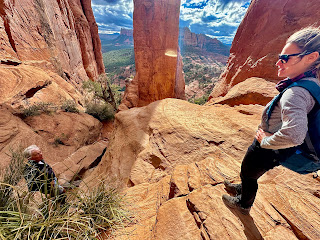I ventured out to the Illinois/Northwest Indiana border during the late afternoon of February 27th, 2024 to see if thunderstorm initiation could take place near the warm sector of a deepening surface cyclone. Shear profiles would be more than favorable for tornadoes if storms did form near my location, but no storms formed, likely due to neutral to slightly anticyclonically curved mid/upper level flow spreading across Indiana which prevented the cap from fully eroding. Meanwhile, strong low-level convergence developed in the vicinity of a surface low pressure center over northern Illinois, which aided in surface based thunderstorm development. I had considered chasing that area, but model forecast soundings showed a consistent near-surface stable layer that prevented me from committing to that target. Plus, storms would drift east into the Chicago metro area with time, which I found to be a horrible chase scenario.
Otherwise, a supercell formed during late afternoon very close to the previously mentioned surface low near the Iowa/Illinois border and produced a 4.5 km pathlength tornado with a duration of 8 minutes. With input from a RAP analysis sounding, the algorithms I'm testing yielded a predicted tornado pathlength for that area of 10 km with a 9.9 minute duration. Additional tornadic storms formed downstream from the surface low, just west of Chicago, with the maximum observed pathlength being 13 km and a duration of 10 minutes. The max predicted pathlength via RAP analysis soundings was 25 km with a duration of 25 minutes...a slight over-prediction compared to observations. Much later in the night, a QLCS advanced into western Ohio and produced a tornado with a pathlength of 22 km and duration of 14 minutes. My algorithms predicted 29.7 km and a duration of 23.6 minutes. Additional data and analysis is provided below.
 |
KLOT base reflectivity during the time of max tornado development. Storms would quickly congeal into a bow echo after this time.
|
 |
KLOT base velocity during the time of max tornado development.
|
 |
250 mb analysis valid at 00 UTC 28 February 2024. Streamlines were neutral to slightly anticyclonically curved across much of the Midwest, which likely aided in suppressing storm development across much of the warm sector.
|
 |
A crude subjective surface analysis with frontal boundaries, isotherms, and surface streamlines analyzed. Late afternoon/early evening severe storm development occurred very close to the region of strongest low-level convergence which aided in offsetting initially marginal large-scale ascent.
|
 |
RAP analysis sounding valid near the time of the first tornado near the Iowa/Illinois border.
|
 |
RAP analysis sounding valid near the time of tornado activity occurring in the vicinity of the Chicago suburbs.
|
 |
RAP analysis sounding valid near the time of QLCS tornadoes in western Ohio.
|
 |
Tornado pathlength and longevity guidance at the time of tornado activity near the Iowa/Illinois border. For reference, observed tornado pathlength and duration was 4.5 km and 8 minutes.
|
 |
Tornado pathlength and longevity guidance at the time of tornado activity near the Chicago suburbs. For reference, max observed pathlength and duration was 13 km and 10 minutes.
|
 |
Tornado pathlength and longevity guidance at the time of QLCS tornado activity in western Ohio. For reference, max observed pathlength and duration was 22 km and 14 minutes.
|





























































